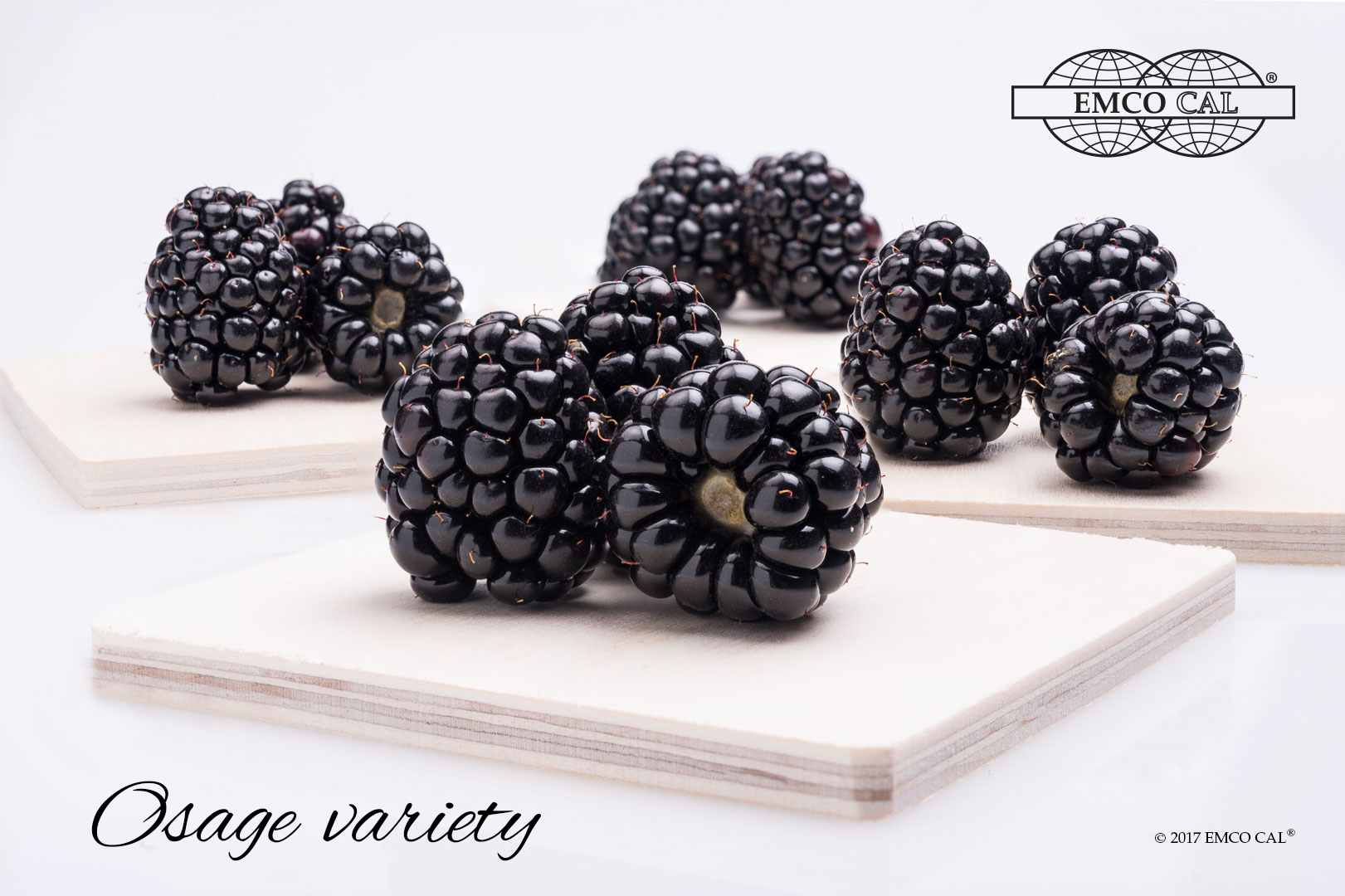Osage cv.

Attributes
- Exceptional flavor and aromatics
- Consistent black, glossy color
- Firm, medium size berry
- Uniformly well-shaped fruit throughout the season
- Excellent transportability & shelf-life
- Early season production
- Highly productive
- Thornless and erect plant
Fruit & Plant Characteristics
The University of Arkansas plant breeder, Dr. John Clark, selected the floricane variety, Osage, for its well-balanced, sweet flavor and pronounced aromatics of the fruit.
Osage produces a high percentage of firm, medium-size berries with excellent shipping and storage qualities. Yields range from 1-4 kg of fruit per plant (2.2-8.8 lbs/ plant). The fruit is uniformly black and glossy with berry size averaging 6-7 g. The druplets fill evenly, giving the fruit an attractive, round shape. Brix averages 11. The Osage fruit shows excellent postharvest handling and storage capacity with little color reversion. The fruit is especially attractive for the fresh market. It has not been evaluated for its processing qualities.
The Osage plant is erect, vigorous, and prolific. Plants rapidly fill in the row. Canes of the Osage are thornless.
Osage enters production as an early, mid-season variety. The grower’s cultural practices, ambient temperatures and the production environment directly affect the earliness of harvest and overall yields.
Climatic Requirements
Osage requires approximately 300 hours of chilling below 7 degrees Celsius for initiation of flowering and fruit set. High temperatures early in the summer inhibit flowering and fruit development. However, protection with shade cloth may mitigate this effect. The variety is cold hardy to -12 degrees Celsius.
Management
When establishing an Osage planting, growers should space plants from 60 cm to 1 meter apart. To force lateral growth during the growing season, select 3 to 5 sturdy primocanes per crown. Once these vigorous canes reach approximately 180 cm of height, cut them back to 160 cm. During the period of dormancy, prune the canes again to 40 to 50 cm in length.
Disease Resistance
Osage offers a consistent level of plant health. The variety remains resistant to orange rust even in close proximity to infected plants. Resistance to anthracnose is moderate in Osage. No data is available on rosette/double blossom. Like other thornless varieties from the Arkansas program, Osage is expected to be resistant to this disease.
*Characteristics may vary depending on weather conditions, day length, soil type and location.

